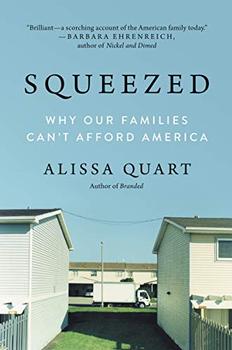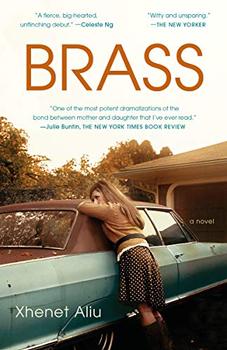Summary | Excerpt | Reviews | Beyond the book | Read-Alikes | Genres & Themes | Author Bio

The Afterlife of an American Metropolis
by Mark BinelliWhen Mark Binelli, a native of Detroit, and general assignment reporter, began work on a book about the city, one of his interview subjects asked him if the book was going to be fiction or non-fiction. "Non," Binelli replied. Binelli writes about the guy's reaction: "He snorted and said, 'No one's gonna believe it.'"
A large portion of Binelli's engaging book, Detroit City is the Place to Be, covers the stuff that "no one's gonna believe." No one, for example, is likely to believe that a once thriving boomtown had gone into such utter and total ruin. Large swathes of empty land, horrendous crime rates, and unemployment – if these issues are bad in urban areas around the country, they are much, much worse in Detroit. "If, once, Detroit had stood for the purest fulfillment of U.S. industry, it now represented America's most epic urban failure, the apotheosis of the new inner-city mayhem sweeping the nation like LSD and unflattering muttonchop sideburns," Binelli writes.
What started out as an assignment for Rolling Stone magazine to cover the automobile show – "and more broadly the collapse of the auto industry" – snowballed into this book project, prompting Binelli to stay and chronicle his Detroit's spectacular decline. Binelli is quick to point out that things have been going downhill for decades now even if the Great Recession accelerated the process dramatically. Growing up in the city decades ago, Binelli remembers: "We held no other concept of Detroit but as a shell of its former self. Our parents could mourn what it used to be and tell us stories about the wonderful downtown department stores and the heyday of Motown and muscle cars. But for us, those stories existed as pure fable."
In a series of chapters, Binelli talks about how race, politics, crime (even an intersection of the three) have all played a strong role in the city's narrative. And of course when you even mention the Motor City, you cannot not discuss the Big Three automakers – and Binelli particularly shines when addressing them in the book.
Binelli bemoans the "ruin porn" that most people talk about when they talk about Detroit. He is tired of all that, he says, and "won't relitigate the sins of the past." Instead the book tries to focus on the city's rebirth: What happens to a once-great place after it has been used up and discarded? Who sticks around and tries to make things work again? And what sorts of newcomers are drawn to the place for similar reasons? These are the questions Binelli looks to answer and, in large part, he succeeds.
The comeback is mostly fueled by DIYers who have taken a lot of essential services into their own hands. The Motor City Blight Busters tear down abandoned homes (about 30 percent of the city is now vacant land) and guerilla landscapers like the Lawn Mower Brigade trim grass in vacant lots. The city is now increasingly attracting artists looking for inexpensive places to live and a boom in urban farming also fuels growth.
The only problem with Binelli's book is its subtitle: "The Afterlife of An American Metropolis." It leads us to believe that the afterlife is already here and that all has turned out well for the city. Reality, of course, is different. City planners are still trying to figure out how to rescale the city and literally shrink its size. And while it is great that artists and urban farmers have taken root here, nobody is under any delusions that these small-scale movements alone can make up for the massive job (and morale) losses the city has suffered.
Where Detroit City does work is in giving us a glimpse of the city at this specific snapshot in time. Decades from now, if one wants to find out what the city was like, right on the cusp of change, this book will be essential reading. For now, the book feels a little loose, maybe even somewhat repetitive – a homeboy's ode to his 'hood. The book sometimes reads like it was forced into book length, when really a multi-part magazine article would have worked just as well. The storyline, too, feels mostly unresolved - because it is. We all want to know how this story ends – what's more, we would much prefer a happy ending.
In an extremely successful series, of Super Bowl commercials, Eminem (a Detroit boy) and Clint Eastwood expound on the many virtues of Chrysler cars and their role as stand-ins for American enterprise. Binelli has said that he was impressed by just how many people loved those commercials. "I think it's because Americans want Detroit to succeed. It's like we need the idea of our worst place coming back. If Detroit can turn it around, then Stockton can too, and Las Vegas, and all those cities in Florida that got hammered by the recession. Now outsiders want to cheer Detroit on." The ads were pitching an "elemental, nearly lost sense of American optimism."
It is not without coincidence that Detroit City's motto is: Speramus meliora; resurget cineribus which translates to: "We hope for better things; it will arise from the ashes." Only time will tell whether that statement is one of hope or irony. If the citizens of this city are any indication, reinvention is just around the corner and that "afterlife" described in the book's subtitle might yet prove to be a vibrant one.
Also of interest is Detroit: An American Autopsy by Charles LeDuff.
![]() This review was originally published in The BookBrowse Review in January 2013, and has been updated for the
November 2013 edition.
Click here to go to this issue.
This review was originally published in The BookBrowse Review in January 2013, and has been updated for the
November 2013 edition.
Click here to go to this issue.

If you liked Detroit City Is the Place to Be, try these:

by Alissa Quart
Published 2019
Families today are squeezed on every side - from high childcare costs and harsh employment policies to workplaces without paid family leave or even dependable and regular working hours. Many realize that attaining the standard of living their parents managed has become impossible.

by Xhenet Aliu
Published 2019
Told in equally gripping parallel narratives with biting wit and grace, Brass announces a fearless new voice with a timely, tender, and quintessentially American story.
Your guide toexceptional books
BookBrowse seeks out and recommends the best in contemporary fiction and nonfiction—books that not only engage and entertain but also deepen our understanding of ourselves and the world around us.